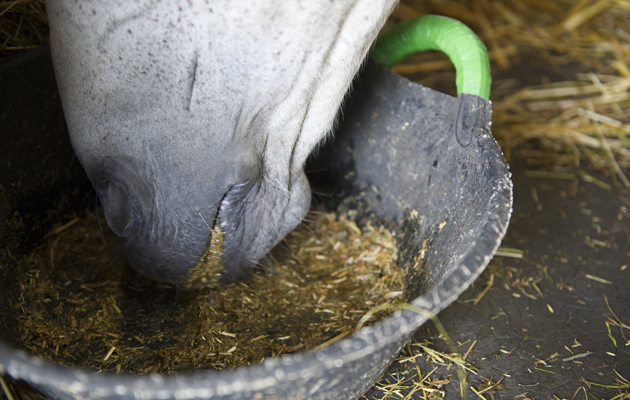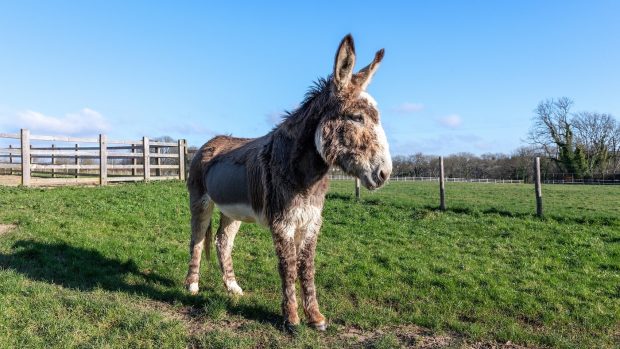Dr David Marlin, equine physiologist, explains why gut health in horses is essential in ensuring the well-being of a horse
Horses rely heavily on fermentation of fibre by microbes including bacteria, fungi and protozoa in their large intestine (hindgut) — this can supply around two-thirds of their energy in the form of volatile fatty acids (VFAs) and lactic acid.
In an adult horse, the whole gastro-intestinal tract represents around 12% of the total bodyweight (around 60kg in a 500kg horse) and around 60% of the digestive tract is taken up by the large intestine.
Dysfunction and disease affecting the gastro-intestinal (GI) tract is unfortunately extremely common in horses. Colic in particular has been identified as a common cause of illness and death in horses (*1,2). Colic in horses may also contribute to the development of laminitis.
Low-grade gastrointestinal disturbance in the hindgut may manifest as loose droppings. To what degree loose droppings are a risk factor for the development of more serious disease is unclear, but loose droppings represent a sign of disturbance to the environment within the large intestine and the balance between the many microbial species present. This is likely at the very least to cause some decrease in the efficiency with which food material is digested and may lead to loss of condition or mild discomfort and interfere with the metabolism and absorption of vitamins and minerals.
Risk factors for colic that have been identified in a variety of studies include change in stabling conditions, recent change in diet and level of activity, decreased exposure to pasture, lack of access to water and transport (*3,4,5). Another risk for GI disturbance is the administration of certain antibiotics, various drugs and wormers.
Across a wide range of animal species yeast has been proposed to improve the balance of bacteria within the intestinal tract, reduce the risk of GI problems, reduce the risk of acidosis and increase fibre digestibility. Yeasts in this context are often referred to as being “probiotics”; The World Health Organization’s (2001) definition of probiotics is “live micro-organisms which, when administered in adequate amounts, confer a health benefit on the host”. These live organisms are either bacteria (as in live yoghurt) or more commonly in horses, live yeasts.
In contrast to probiotics, prebiotics are not live and are therefore unaffected by temperature and acidity but they also promote the growth of bacterial species that support a healthy hindgut. Dead yeast for example is often used as a prebiotic.
A number of studies have shown that live yeasts are able to beneficially modulate hindgut function in the horse (*6,7,8). In European countries live yeasts have a specific classification as far as feed ingredients for animals and only those which have been registered as “zootechnical additives” may be used. One of the most commonly used yeast species in horses is Saccharomyces cerevisiae. In order to ensure as much live yeast reaches the hindgut as possible, some products use live yeasts that are protected from heat, acidity and digestive enzymes in the stomach and small intestine by a coating of dead yeast cells.
Like this? You might also enjoy reading these:
Horse health week: why vitamins and minerals are essential
The 10 golden rules of feeding horses
H&H Feed Week: Test your knowledge of the horse’s digestive system
The benefits of feeding live yeasts as a probiotic to horses include stabilisation of the conditions in the hindgut resulting in the stimulation of natural fermentative activity, improving fibre digestion of forages such as hay and haylage and improving the efficiency of digestion.
It is worth considering feeding a protected live yeast based gut balancer type of product to horses under stress, horses prone to colic or laminitis, horses that develop GI upset on medications such as antibiotics, to horses around the time of worming, when changes to diet are made, for poor doers, older horses that lose condition and horses that develop loose droppings.
* References: 1 Ireland et al. (2011); 2 USDA (2006) APHIS Info Sheet; 3 Cohen et al. (1995) ; 4 Hudson et al. (2001); 5 Knubben et al. (2008); 6 Jouany et al. (2007) ; 7 Jouany et al. (2008) 8 Medina et al. (2002)




